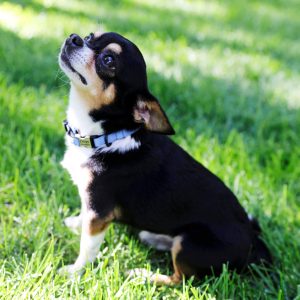As pet owners, one of our top priorities is ensuring the safety of our dogs, especially when it comes to what they ingest. It’s not uncommon for dogs to chew on almost anything they can find, including leather items like shoes, belts, and even their collars. But can dogs eat leather safely? Understanding the risks associated with dogs eating leather is crucial for preventing potential health issues.
Health Risks of Ingesting Leather
Digestive Blockages: One of the primary dangers of a dog eating leather is the risk of gastrointestinal blockage. Leather is not digestible and can get stuck in the stomach or intestines, leading to severe complications. Symptoms of a blockage may include vomiting, loss of appetite, abdominal pain, and lethargy. These symptoms require immediate veterinary attention.
Toxicity Concerns: The tanning process for making leather often involves chemicals that can be toxic to dogs. These chemicals might remain in the leather, especially in poorly processed leather, posing a risk of poisoning if ingested. Symptoms of toxicity from leather can vary but may include gastrointestinal upset, drooling, and chemical burns to the mouth and throat.
Choking Hazard: Small pieces of chewed-up leather can also pose a choking hazard, particularly for smaller dogs. A piece of leather can easily become lodged in a dog’s throat, obstructing the airway and requiring emergency intervention.

Preventative Measures
Provide Appropriate Chew Toys: To prevent your dog from chewing on leather items, provide plenty of suitable chew toys that satisfy their need to gnaw without the risks associated with eating leather. Ensure these toys are made of safe, non-toxic materials designed to withstand heavy chewing.
Keep Leather Items Out of Reach: Be vigilant about keeping leather goods such as shoes, handbags, and belts out of your dog’s reach. Pay particular attention to leather dog collars when not in use, as these can be particularly tempting.
Regular Monitoring and Training: Monitor your dog’s behavior regularly to catch any undesirable chewing habits early. Training your dog to understand what is and isn’t an acceptable chew item can also help prevent them from turning to inappropriate objects like leather goods.
Health Monitoring
Watch for Any Signs of Distress: If you suspect your dog has ingested leather, watch closely for any signs of distress. Early intervention is crucial to preventing serious complications from leather ingestion.
Consult Your Veterinarian: If you notice any unusual symptoms or if you know your dog has swallowed leather, consult your veterinarian immediately. They can provide guidance and, if necessary, professional medical intervention.
Conclusion
While dogs may find leather chewable and even tasty, eating leather is undoubtedly dangerous for them. The risks range from digestive blockages and choking to potential toxicity, all of which pose significant health threats. As a responsible pet owner, it’s essential to prevent access to leather items and provide safer alternatives for chewing. Remember, keeping your pet safe is just as important as keeping them entertained and engaged.
